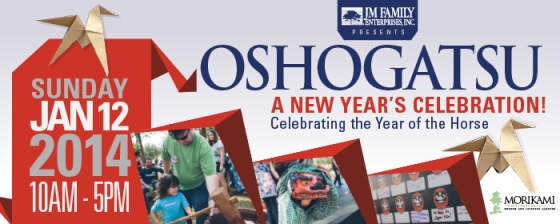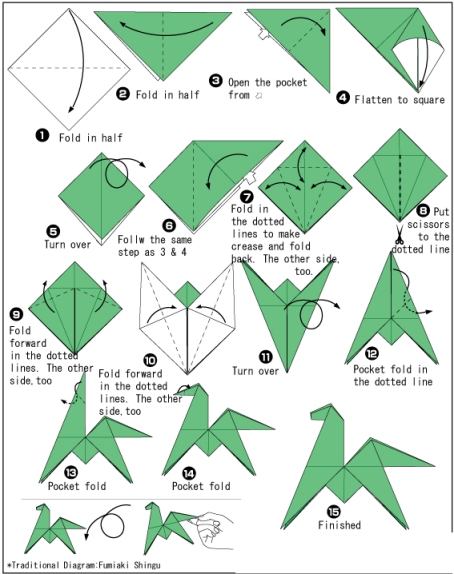UPDATE 1/10/14: Due to extreme flooding Oshogatsu has been postponed until Sunday, January 19, 2014. If you have already purchased tickets you will receive an email with details about your purchase. Otherwise, you may still purchase tickets online until Friday, January 17th at noon. We apologize for any inconvenience and hope to see you all there next Sunday!
It’s that time of year, fans, where we gather together with family and friends, reflect on the year that has passed and look forward to the one to come. The holiday season can be a blur of activity, but it all culminates in one of our favorite events – Oshogatsu: A New Year’s Celebration!
The New Year is Japan’s most important and celebrated holiday, and many traditions and activities are included in the festivities. To get you prepared for our upcoming New Year’s festival, we’ll be explaining one or two of these traditions each Friday until January 12th. Check back each week to learn more about what makes Oshogatsu so special, and how we’ll interpret these traditions at the festival.
The Zodiac
Every year is named after one of the zodiac animals, and this year we celebrate the Year of the Horse for those born in 1930, 1942, 1954, 1966, 1978, 1990, 2002, and 2014. The zodiac was introduced to Japan from China and there are several tales of how the animals were selected and in what order. One of the most popular stories finds Buddha calling all the animals of the world to come to him on New Year’s Day. As a reward, he promises each one a gift. Only 12 animals came and each one was given the honor of having a year named for them. Their arrival time marks their esteemed position in the twelve-year cycle, with the rat always first and the boar forever last.
The Year of the Horse
People born in the same zodiac year are thought to share some of the same characteristics. Those born in the year of the horse are said to be skillful in paying compliments and in handling money and financial matters. They are also supposed to be talkative, quick thinkers, wise and talented. Horse people may also anger easily and be impatient.
For the upcoming year of the horse, we’d like to introduce you to our Oshogatsu mascot – Uma! We made an origami version of Uma to show her off to you, so follow us on Vine to check it out, or scroll down to see how to make an Uma of your own.
See you back here Friday, 12/20 when we’ll talk about Mochitsuki – the rice pounding ceremony!


